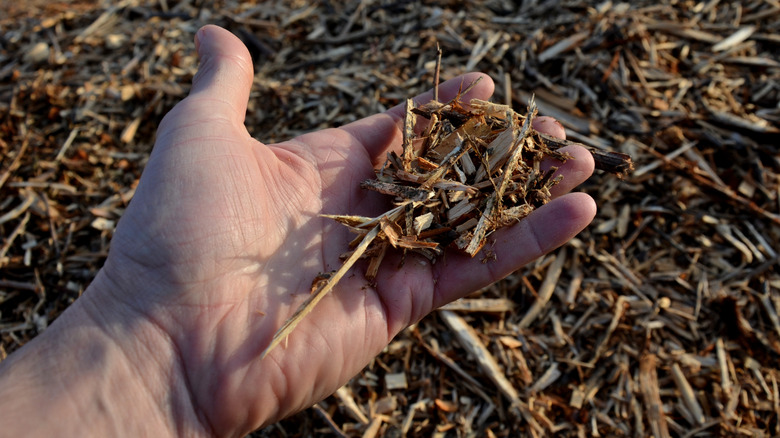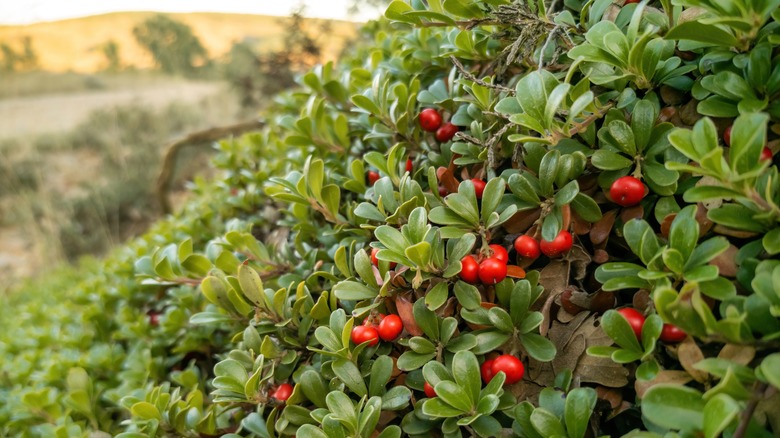The Ground Cover That Makes The Perfect Mulch Alternative In Your Sloped Yard
Gardeners with sloped yards often find themselves with a conundrum — grass is hard to maintain because mowing can be dangerous, while landscaping with mulch can be problematic as well, with rain washing away both soil and mulch. However, when gardeners grow the right plants, these living mulches can serve as an alternative solution for sloped yards, both preventing erosion and acting as a ground cover. Bearberry (Arctostaphylos uva-ursi) is a low-growing plant that's perfect for this job. In addition to protecting the soil by decreasing erosion, bearberry shrubs provide food and habitat for wildlife and can serve as alternatives for invasives such as English ivy. If those reasons weren't enough, gardeners will also want to grow this evergreen ground cover for stunning color all year round.
Bearberry's attractive foliage is green during the warmer months, but develops an attractive, bronze to reddish coloring in cold weather. These small, leathery, teardrop-shaped leaves work perfectly to protect your yard by growing densely enough to help slow rainwater infiltration into the soil, suppress weeds, and retain soil moisture. Also known as kinnikinnick, this native perennial ground cover boasts pretty white blooms, which are born in winter and spring and give way to bright red, edible fruit. Above ground, it reaches up to 12 inches tall and spreads up to 6 feet wide, while underground, it helps prevent erosion with its fibrous roots.
How to grow bearberry as a living mulch
Gardeners considering bearberry for use on sloped yards as a low-maintenance living mulch can grow it if they live in USDA Hardiness Zones 3 to 7. This creeping ground cover grows perfectly well in full sun or part shade, and it prefers shady conditions in the afternoon in hotter, drier climates. The best soils for bearberry are sandy or gritty, and this beautiful plant tolerates dry soil and drought, as well as salty conditions. Those with acidic soils are in luck, since bearberry happily grows in a soil pH range of 4.0 to 7.0. However, gardeners should keep in mind this plant's need for well-draining conditions.
Because of its ease of care and its erosion-fighting properties, bearberry provides a perfect alternative for grass on sloped yards. However, gardeners can use these shrubs in other parts of the yard as well, including in rock gardens, among meadows, or along walkways. Those in fire-prone areas should take note — bearberry can be used as a fire-resistant ground cover alternative to more flammable landscaping plants. Making it even more attractive, it is also a fast-growing ground cover shrub that attracts pollinators while being deer-resistant; butterflies, bees, and hummingbirds love bearberry flowers. And as the name suggests, the fruits of these plants are popular with bears, as well as birds.

